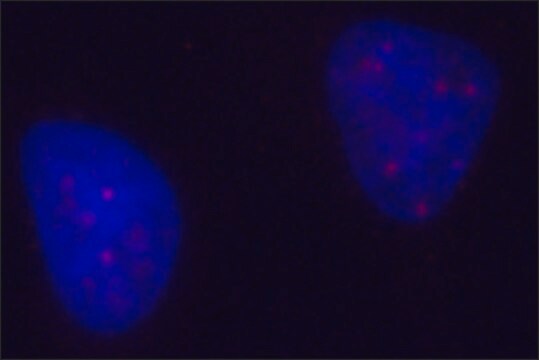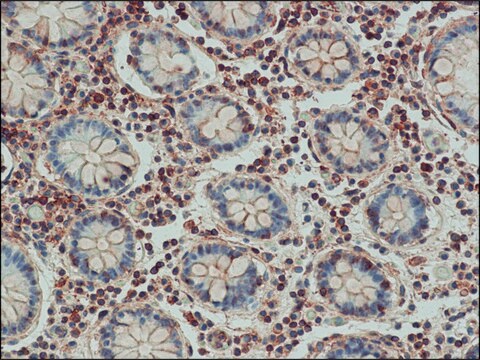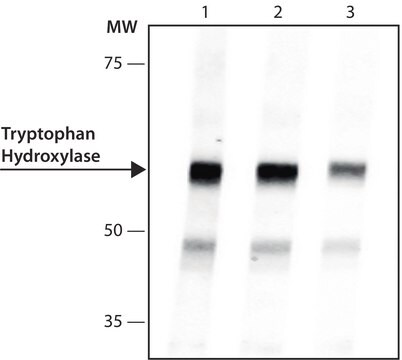ABC12
Anti-Bak (NT) Antibody
from rabbit, purified by affinity chromatography
Sinónimos:
Apoptosis regulator BAK, BCL2-antagonist/killer 1, BCL2-like 7 protein, Bcl-2 homologous antagonist/killer, Bcl-2-like protein 7, pro-apoptotic protein BAK
About This Item
Productos recomendados
origen biológico
rabbit
Nivel de calidad
forma del anticuerpo
affinity isolated antibody
tipo de anticuerpo
primary antibodies
clon
polyclonal
purificado por
affinity chromatography
reactividad de especies
mouse, rat, human
técnicas
immunocytochemistry: suitable
immunohistochemistry: suitable
immunoprecipitation (IP): suitable
western blot: suitable
Nº de acceso NCBI
Nº de acceso UniProt
Condiciones de envío
wet ice
modificación del objetivo postraduccional
unmodified
Información sobre el gen
human ... BAK1(578)
Descripción general
Especificidad
Inmunógeno
Aplicación
Immunoprecipitation Analysis: For unpurified antibodies. 10 µg from a previous lot immunoprecipitated Bak from 500 µg of NIH3T3 lysate.
Immunohistochemistry Analysis: 1:300 dilution from a previous lot detected Bak in kidney tissue.
Immunocytochemistry Analysis: 1:500 dilution from a previous lot detected Bak in HeLa, NIH/3T3, and A431 cells.
Calidad
Western Blot Analysis: 0.5 µg/ml of this antibody detected Bak on 10 µg of Hek293 cell lysate.
Descripción de destino
Ligadura / enlace
Otras notas
¿No encuentra el producto adecuado?
Pruebe nuestro Herramienta de selección de productos.
Opcional
Código de clase de almacenamiento
12 - Non Combustible Liquids
Clase de riesgo para el agua (WGK)
WGK 1
Punto de inflamabilidad (°F)
Not applicable
Punto de inflamabilidad (°C)
Not applicable
Certificados de análisis (COA)
Busque Certificados de análisis (COA) introduciendo el número de lote del producto. Los números de lote se encuentran en la etiqueta del producto después de las palabras «Lot» o «Batch»
¿Ya tiene este producto?
Encuentre la documentación para los productos que ha comprado recientemente en la Biblioteca de documentos.
Nuestro equipo de científicos tiene experiencia en todas las áreas de investigación: Ciencias de la vida, Ciencia de los materiales, Síntesis química, Cromatografía, Analítica y muchas otras.
Póngase en contacto con el Servicio técnico







